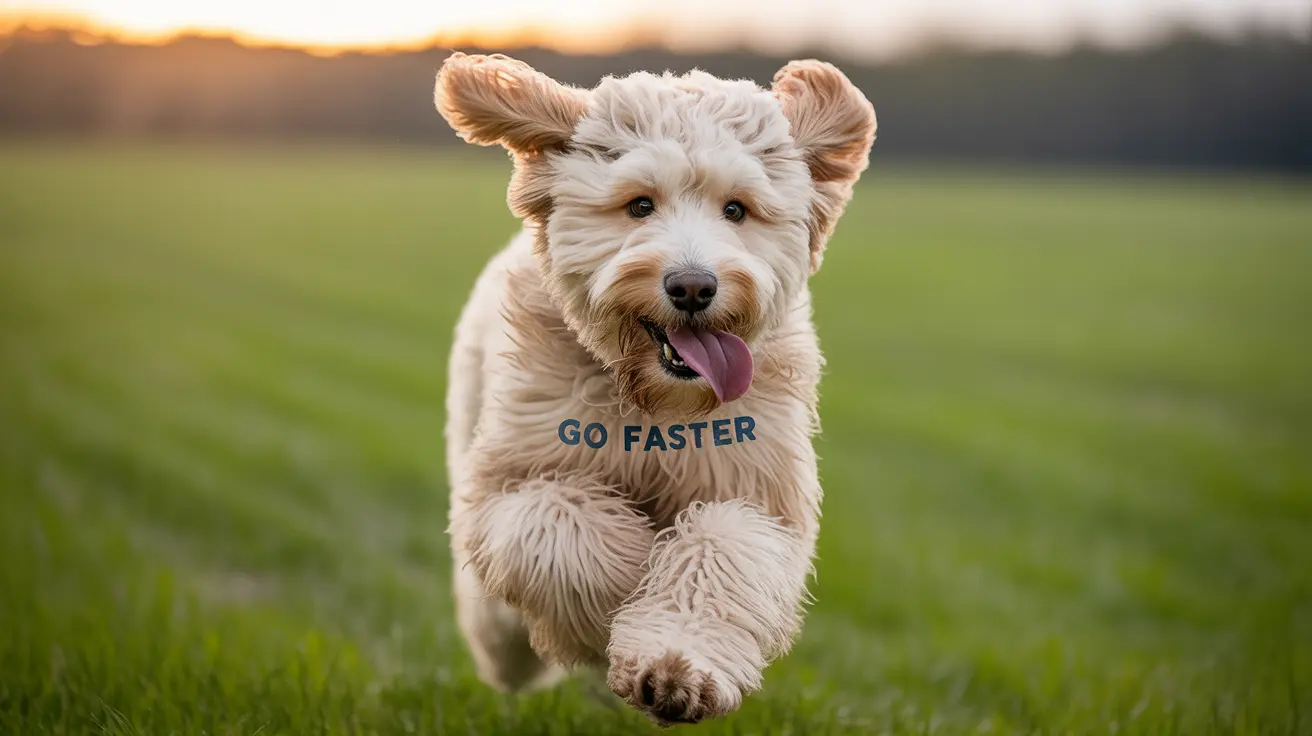Wondering about your Labradoodle's running capabilities? These energetic crossbreeds, combining the athletic prowess of Labrador Retrievers and Poodles, are impressive runners that can keep pace with even the most active owners. Let's explore their speed potential and what makes these dogs such excellent running companions.
Understanding a Labradoodle's running abilities is crucial for providing appropriate exercise and ensuring their health and happiness. Whether you're considering a Labradoodle as a jogging partner or simply curious about their athletic capabilities, this comprehensive guide will cover everything you need to know.
Maximum Running Speed of Labradoodles
A healthy adult Labradoodle can reach impressive speeds of 25-30 miles per hour during regular runs. During short bursts or sprints, they can even achieve speeds up to 35 mph, showcasing their remarkable athletic ability. These speeds place them in the same league as other athletic breeds like German Shepherds and Border Collies.
However, it's important to note that these top speeds are typically achieved during brief sprints rather than sustained running sessions. Like most dogs, Labradoodles excel at burst speed but need to pace themselves for longer distances.
Factors Influencing Running Speed
Size and Build
Standard Labradoodles generally run faster than their miniature counterparts due to their longer legs and more athletic build. The size difference can result in significant speed variations, with standard Labradoodles typically achieving higher top speeds.
Age and Health
A Labradoodle's running speed varies significantly throughout their life stages. Puppies should not engage in sustained running until their joints fully develop, while senior dogs naturally slow down as they age. Peak running speed typically occurs during their adult years, between 2-7 years old.
Environmental Conditions
Weather, terrain, and surface type all play crucial roles in a Labradoodle's running performance. They perform best on natural surfaces like grass or packed dirt, while extreme temperatures or slippery conditions can significantly impact their speed and endurance.
Exercise Requirements and Training
Labradoodles need substantial daily exercise to maintain their health and happiness. Adults typically require at least 60 minutes of exercise twice daily, which can include a mix of running, walking, and play activities.
When training your Labradoodle for running, start gradually and build up their endurance over time. Begin with shorter distances at moderate speeds before progressing to longer runs or faster paces.
Safety Considerations for Running
Before engaging in regular running activities with your Labradoodle, consider these important safety measures:
- Wait until they're fully grown (typically 18-24 months) before starting a running routine
- Check paw pads regularly for wear and tear
- Maintain proper hydration before, during, and after runs
- Watch for signs of fatigue or overheating
- Choose appropriate running surfaces to protect their joints
Frequently Asked Questions
How fast can a healthy adult Labradoodle run during sprints and regular runs?
A healthy adult Labradoodle can sprint at speeds up to 35 mph and maintain a regular running pace of 25-30 mph for shorter distances.
What factors affect the running speed of a Labradoodle, such as age or terrain?
Key factors include age, size, physical condition, terrain type, weather conditions, and overall health status. Standard Labradoodles typically run faster than miniature varieties, and adult dogs in their prime achieve the highest speeds.
How much exercise does a Labradoodle need to maintain good running fitness?
Labradoodles need at least 60 minutes of exercise twice daily, including a mix of running, walking, and play activities to maintain optimal fitness levels.
Can Labradoodles sustain their top speed over long distances or only during short bursts?
Labradoodles achieve their top speeds during short bursts or sprints. While they have good endurance, they typically maintain moderate speeds for longer distances rather than their maximum sprint speed.
What precautions should I take when running with my Labradoodle to prevent injury?
Key precautions include waiting until full maturity before starting a running routine, gradually building endurance, monitoring for fatigue, ensuring proper hydration, and choosing appropriate running surfaces to protect their joints.
Understanding your Labradoodle's running capabilities helps ensure safe and enjoyable exercise sessions for both you and your furry friend. Remember to always consider their individual needs and limitations when planning running activities.






